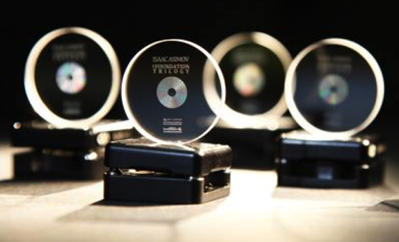Arch Library Created Using 5D Optical Storage Technology
It carries Foundation Trilogy of science fiction books by Isaac Asimov.
This is a Press Release edited by StorageNewsletter.com on February 14, 2018 at 2:33 pmThe successful launch of the new rocket, the Falcon Heavy, by SpaceX from the Kennedy Space Centre in Florida into a Mars orbit around the Sun, has captured the world’s imagination and attention mainly because of its power but also because of its payload.
The first Arch library carries the Foundation Trilogy of science fiction books by Isaac Asimov

Famously aboard the spacecraft is a Tesla Roadster, owned by SpaceX CEO Elon Musk, but joining the bright red sports car on its journey around our solar system is the Arch Library, created using 5D optical storage technology developed by Professor Peter Kazansky and his team at the University of Southampton’s Optoelectronics Research Centre.
This first Arch library (pronounced Ark) – known as the Solar Library – contains the Foundation Trilogy of science fiction books written by Elon Musk’s favourite American author, Isaac Asimov. Archs are the vision of the Arch Mission Foundation which wants to permanently preserve and disseminate human knowledge as part of an ‘Encyclopedia Galactica’ across time and space for the benefit of future generations.
Over the last few years, scientists at the ORC have made a major step forward in the development of digital storage that is capable of surviving for billions of years. Using nanostructured glass, they have developed the recording and retrieval processes of five dimensional (5D) digital data by femtosecond laser writing.
Professor Peter Kazansky, ORC and Arch Mission advisor, said: “This is major step forward for humankind and I am delighted that the ORC is part of this mission. It is visionary projects like this that help us push forward with R&D into 5D storage with even greater data capacity.“
The storage allows properties in terms of data data capacity, thermal stability up to 1,000°C and virtually unlimited lifetime at room temperature opening a new era of ‘eternal’ data archiving. The technology was first experimentally demonstrated in 2013 when a 300KB digital copy of a text file was recorded in 5D.
As a very stable and safe form of portable memory, the technology could be useful for organisations with big archives, such as national archives, museums and libraries, to preserve their information and records.
This Arch Library is the second in a series of five (the first resides in Elon Musk’s personal library) and are two of the longest-lasting storage objects created by humans, and the product of decades of work by Professor Kazansky and the ORC to invent a new form of storage capable of serving the needs of the growth of big data.
The Arch Mission plans to launch more Arch libraries into orbit in the future to create a ring of knowledge around the sun.
Read also:
5D Storage Capable of Surviving for Billions of Years – University of Southampton
360TB/disc using nanostructured glass with femtosecond laser writing
2017.03.01 | Press Release
5D Optical Memory in Nanostructured Quartz Glass for Unlimited Lifetime Storage
Demoed by scientists of University of Southampton
2013.07.17 | Press Release














 Subscribe to our free daily newsletter
Subscribe to our free daily newsletter


